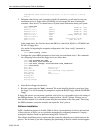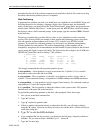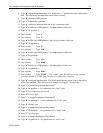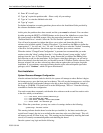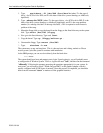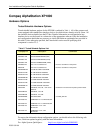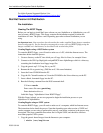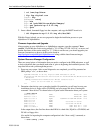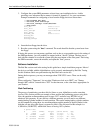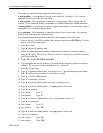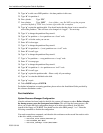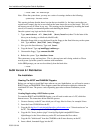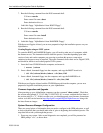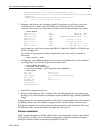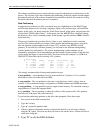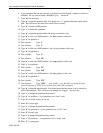
Linux Installation and Configuration Guide for AlphaServer 67
ECG513/0100
3. Configure the system SRM parameters to boot from your installation device. A table
providing cross-referenced device names is located in Appendix C, for your convenience.
Example commands for configuring to boot from the floppy device are shown here:
>>>set bootdef_dev dva0
>>>set boot_file vmlinux.gz
>>>set boot_osflags "root=/dev/hda"
>>>show boot*
boot_dev dva0.0.0.0.0
boot_file vmlinux.gz
boot_osflags root=/dev/hda
boot_reset OFF
bootdef_dev dva0.0.0.0.0
booted_dev
booted_file
booted_osflags
4. Insert the boot floppy into the drive.
5. Boot the system using the "boot" command. The result should be that the system boots from
the floppy.
If during this process you encounter a problem, such as due to a typographic error in the setting of
the SRM parameters, you will probably be stopped with an "aboot>" prompt. The best way to
deal with this situation is to reset the system using the reset button on the front panel. Then using
the SRM commands, correct the mistake, and repeat the "boot" process.
Software Installation
The Red Hat version used in the testing for this guide has a simple installation program. Most of
the devices available with the AlphaStations can be correctly autodetected by Red Hat. Testing
for this Solutions Guide was performed using Red Hat Linux version 6.0.
During the boot process, you may see messages about "IDE STO" errors. These can be safely
ignored.
When configuring "Timezones", do not select "Hardware clock set to GMT", nor "Startup
through ARC console". Instead select "EST" for the timezone, or the value that is appropriate for
your location.
Disk Partitioning
The process of partitioning your boot disk for Linux on your AlphaServer can be somewhat
involved. This section provides an example of how perform the partitioning process using fdisk.
Note, the partition recommendations used in steps 14-27 are based on a RZ1DD-AA (or
whatever) disk geometry. If your disk has a different geometry you will need to use different
starting/ending cylinder numbers for each partition. The correct starting/ending cylinder numbers
can be computed by using these size recommendations and the number of bytes/cylinder for the
disk that you are using (this figure is reported by fdisk). The disk used for this example is a
4.3GB drive (DS-RZ1CF) which fdisk shows as having 1023 cylinders:
4 partitions:
# size offset fstype [fsize bsize cpg]
a: 16368 0 boot # (Cyl. 1 - 2)
b: 212784 16368 ext2 # (Cyl. 3 - 28)
c: 4272048 229152 swap # (Cyl. 29 - 550)
d: 3871032 4501200 ext2 # (Cyl. 551 - 1023)



